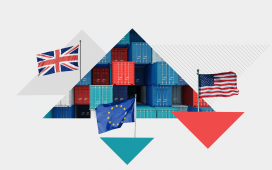What are Crypto Futures?
It is simply an agreement to buy or sell a specific crypto at a predetermined price at a future date. These contracts are standardized and traded on futures exchanges, which provide a regulated environment for traders. By entering into a futures contract, traders can lock in prices, predict on price movements, and manage risk more effectively.
How Do Crypto Futures Contracts Work?
Crypto futures contracts operate similarly to traditional futures contracts but with some nuances unique to the digital asset market. Here’s a step-by-step breakdown of how they work:
Crypto Tracker
Selection of Asset and Contract Type: Traders first choose the cryptocurrency they want to trade (e.g., Bitcoin, Ethereum) and the type of futures contract. There are two main types:
- Perpetual Futures Contracts: These do not have an expiry date, allowing traders to hold positions indefinitely. They are typically subject to periodic funding rates to keep the contract price close to the spot price.
- Fixed-Date Futures Contracts: These have a specific expiration date and time. Traders must settle their positions by this date, either through physical delivery of the asset or cash settlement.
Entering a Position: Traders can enter a position by either buying (going long) or selling (going short) a futures contract. Going long means the trader expects the price of the cryptocurrency to rise, while going short indicates an expectation of a price decline.Margin Requirements: To trade futures contracts, traders must maintain a margin account. This account holds a portion of the contract’s value as collateral. The margin requirement varies depending on the exchange and the volatility of the asset. There are two types of margins:
- Initial Margin: The upfront collateral required to open a position.
- Maintenance Margin: The minimum collateral required to keep the position open. If the account balance falls below this level, the trader will face a margin call, requiring them to add more funds or close the position.
Leverage: One of the key features of futures contracts is leverage, allowing traders to control large positions with a relatively small amount of capital. For instance, with 10x leverage, a trader can control $10,000 worth of Bitcoin with just $1,000. While leverage amplifies potential profits, it also increases the risk of significant losses.Settlement: Upon the contract’s expiration (for fixed-date contracts), traders must settle their positions.
The Benefits of Trading Crypto Futures
Crypto futures contracts offer several advantages that make them appealing to traders and investors:
- Hedging Against Price Volatility: For long-term investors holding significant amounts of cryptocurrency, futures contracts provide a way to hedge against adverse price movements. By entering into a futures contract, they can lock in prices and protect their investments from short-term volatility.
- Leverage: As mentioned earlier, leverage enables traders to amplify their exposure to the market with a relatively small amount of capital. This can lead to higher returns on investment, though it also comes with increased risk.
- Market Efficiency and Price Discovery: Futures trading contributes to market efficiency by enabling better price discovery. The futures market reflects traders’ collective expectations about future price movements, providing valuable insights into market sentiment.
Risks and Considerations
While crypto futures contracts offer numerous benefits, they are not without risks. Here are some key considerations:
- High Volatility: Cryptocurrencies are known for their extreme price volatility. While this presents opportunities for profit, it also increases the risk of significant losses, especially when using leverage.
- Margin Calls and Liquidation: Leveraged trading can lead to margin calls if the market moves against a trader’s position. If additional funds are not added to the margin account, the position may be liquidated, resulting in a loss.
- Complexity: Futures trading requires a good understanding of market dynamics, technical analysis, and risk management. It’s not suitable for beginners without sufficient knowledge and experience.
- Regulatory Risks: The regulatory landscape for cryptocurrencies and futures trading is continually evolving. Changes in regulations can impact the availability and legality of futures trading in certain jurisdictions.
Conclusion
Crypto futures contracts are powerful financial instruments that provide traders and investors with a means to hedge and manage risk in the highly volatile cryptocurrency market. While they offer significant opportunities for profit, they also come with considerable risks. Understanding how these contracts work and the strategies involved is crucial for anyone looking to participate in this dynamic market. As the cryptocurrency space continues to evolve, futures trading will likely play an increasingly important role in shaping its future.
(Edul Patel is the CEO & Co-founder of Mudrex, a Global Crypto Investment Platform)
(Disclaimer: Recommendations, suggestions, views, and opinions given by the experts are their own. These do not represent the views of The Economic Times.)










